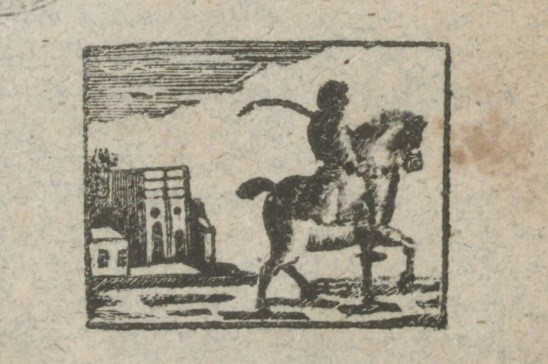
This particular peepshow was produced in Germany in around 1835 and consists of hand-coloured scenes based on contemporary illustrations of the Old Town in Edinburgh.
#Noncreepypeepy
#Noncreepypeepy
The title is in German, French, and English, which shows that it was produced not just for the German market but for the overseas market as well.
#Noncreepypeepy
#Noncreepypeepy
So... do you want to look inside? 😀
Just so you know - that siren you hear in the video isn't a period-specific one from the 1830's that we skilfully added for extra multimedia realism and historical accuracy. We did consider that, though... 😉
#Noncreepypeepy
#Noncreepypeepy
Here's a still of the view.
(If you can't be bothered to sit through FIFTEEN WHOLE SECONDS of video, that is 💅).
#Noncreepypeepy
(If you can't be bothered to sit through FIFTEEN WHOLE SECONDS of video, that is 💅).
#Noncreepypeepy

What you just saw was a view of Edinburgh’s Grassmarket with the premises of ‘G.E. Wright Stabler’ (and @edinburghcastle) in the distance and the West Port to the left.
#Noncreepypeepy
#Noncreepypeepy
Paper peepshows (or teleoramas) were first published in Germany and Austria in the 1820s. Unlike earlier 18th-century versions which were made of wooden boxes and were cumbersome to use, these new peepshows were small, light and simple to operate.
#Noncreepypeepy
#Noncreepypeepy
They used paper panels which were connected at the sides, like bellows. The diminishing paper panels created an effect of receding perspective, which led the viewer’s gaze towards the back scene, in much the same way as a conventional theatre set.
#Noncreepypeepy
#Noncreepypeepy
The cheap and simple construction meant that the design was quickly copied and soon peepshows were being mass-produced across the world, giving people in an era before mass tourism a chance to visit famous places or events.
#Noncreepypeepy
#Noncreepypeepy
Paper peepshows were extremely popular in the 19th century, but from the 1850s onward there was strong competition from mass-produced stereoscopic photographs and viewers (as well as magic lanterns) and by the early 20th century they'd declined in popularity.
#Noncreepypeepy
#Noncreepypeepy
Thanks for peeping! If you’d like more information give us a shout. 'Paper Peepshows' by Ralph Hyde (2015) provides a great introduction to the intriguing world of the Paper Peepshow (view it here at shelfmark > HB6.215.6.77).
#Noncreepypeepy
#Noncreepypeepy

OK then. We'll move away from the filthy yet picturesque city streets of Auld Reekie to a purer, healthier, greener, more *mountain-y* type of place.
#Noncreepypeepy
#Noncreepypeepy
This peepshow is called 'Panorama des glaciers du Mont-Blanc' and it was made in 1865. It's a hand-coloured peepshow and shows a scene of France's Mont Blanc, ranging from the forest to the mountain peak and including buildings, animals, and many mountaineers.
#Noncreepypeepy

#Noncreepypeepy


Hope you liked that brief mountain excursion (and you enjoyed the thread).
There's nothing else to say but keep on #noncreepypeepy-ing 👍
There's nothing else to say but keep on #noncreepypeepy-ing 👍
@threadreaderapp unroll 👍
• • •
Missing some Tweet in this thread? You can try to
force a refresh


















